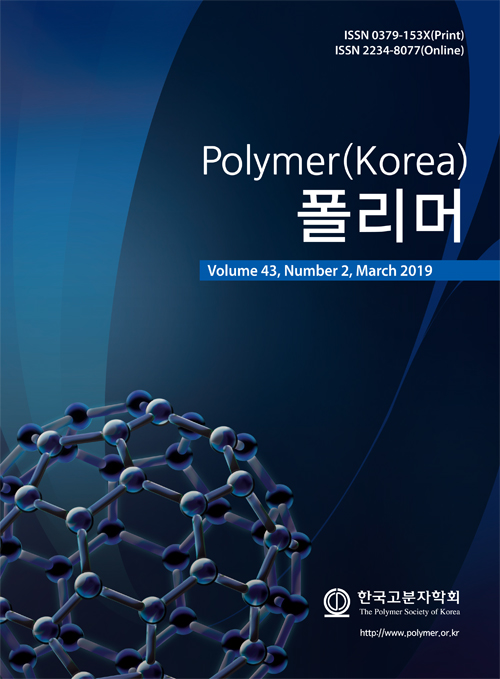- Effect of Curing Condition on Adhesion Property of Pressure-sensitive Adhesive for Protective Film
Department of Chemical Engineering and Applied Chemistry, College of Engineering, Chungnam National University, 99 Daehak-ro, Yuseong-gu, Daejeon 34134, Korea
- 보호 필름용 점착제 점착 특성에 대한 경화 조건의 영향
충남대학교 응용화학공학과
The importance of protective film is more emphasized in such aspects as appearance protection, prevention of moisture, and prevention from contamination. Pressure sensitive adhesives for protective film based on copolymer of butyl acrylate and acrylic acid were prepared with various curing methods and crosslinking agents in order to control both adhesive force and residue after peeling off. For the UV cured pressure sensitive adhesives, both peel strength and residue after peeling off were reduced as both crosslinking agent content and UV dose increased. For the thermally cured pressure sensitive adhesives, both peel strength and residue after peeling off were reduced as both crosslinking agent content and thermal curing time increased. In addition, the thermally cured pressure sensitive adhesives showed better adhesive property for protective film because less variation in both peel strength and residue after peeling off was maintained after staying longer time at higher temperature.
외관 보호, 습기 및 공기로부터의 열화 방지 등의 목적으로 제품의 표면을 보호하는 보호 필름의 중요성이 점차 부각되고 있다. 보호 필름의 점착력 및 박리 후 표면 잔사를 제어하기 위해 butyl acrylate 및 acrylic acid의 공중합체를 기본 수지로 하고 경화방법, 가교제의 양을 변수로 하여 보호필름용 점착제를 제조하였다. 자외선경화 점착제의 경우 가교제의 양이 증가할수록, 자외선 조사량이 증가할수록 점착력과 잔사는 감소하였다. 열경화 점착제의 경우 경화제의 양이 증가할수록, 열 경화시간이 증가할수록 점착력과 잔사가 감소하였을 뿐만 아니라 경시변화에 따른 점착력 및 잔사의 변화가 낮아 우수한 점착특성을 나타내었다.
Keywords: pressure sensitive adhesive, UV curing, thermal curing, protective film
- Polymer(Korea) 폴리머
- Frequency : Bimonthly(odd)
ISSN 0379-153X(Print)
ISSN 2234-8077(Online)
Abbr. Polym. Korea - 2023 Impact Factor : 0.4
- Indexed in SCIE
 This Article
This Article
-
2019; 43(2): 316-320
Published online Mar 25, 2019
- 10.7317/pk.2019.43.2.316
- Received on Dec 24, 2018
- Revised on Jan 19, 2019
- Accepted on Jan 22, 2019
 Correspondence to
Correspondence to
- Hyung-Il Kim
-
Department of Chemical Engineering and Applied Chemistry, College of Engineering, Chungnam National University, 99 Daehak-ro, Yuseong-gu, Daejeon 34134, Korea
- E-mail: hikim@cnu.ac.kr










 Copyright(c) The Polymer Society of Korea. All right reserved.
Copyright(c) The Polymer Society of Korea. All right reserved.